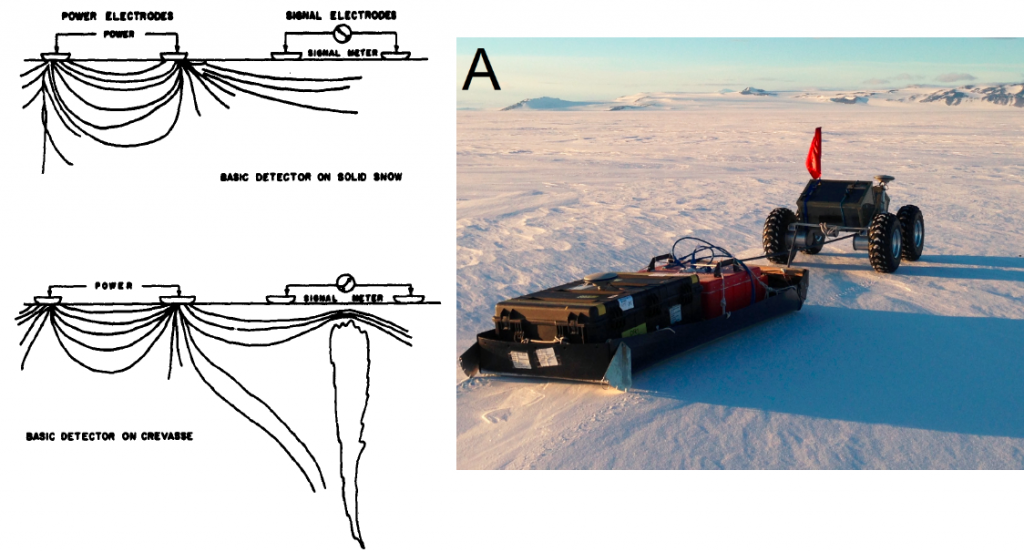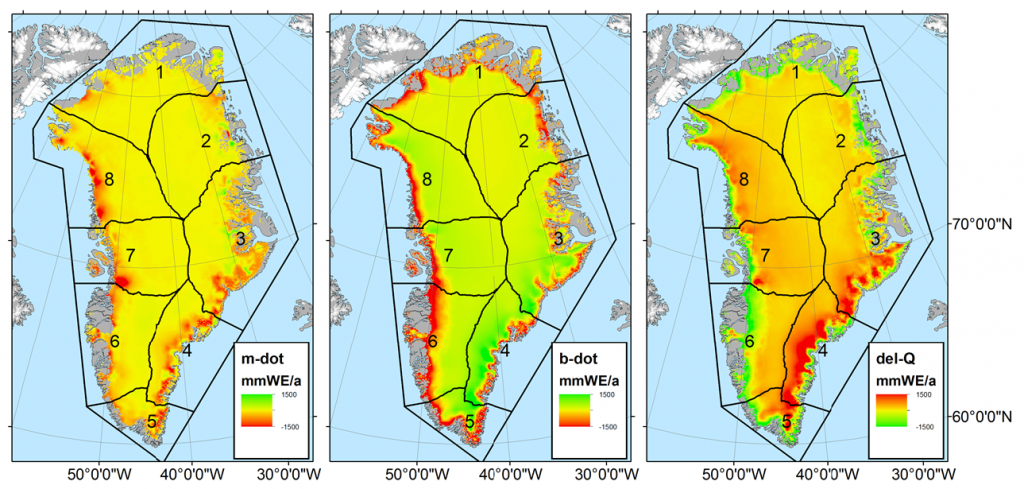We have a new article in the current issue of Geophysical Research Letters that looks at the influence of Greenland’s peripheral glaciers on vertical bedrock motion. Greenland’s bedrock is currently uplifting, due to both slow mantle-deformation processes associated with ice loss at the end of the Last Glacial Period, and fast elastic processes associated with ice loss today. The vertical bedrock uplift being measured in Greenland today ranges from a couple millimeters to a couple centimeters across the country. Understanding the magnitude and spatial distribution of this uplift helps us understand not only recent ice loss, but also properties of the Earth’s mantle beneath Greenland.

When folks create maps of Greenland’s present-day uplift rate, they typically use a model of changing ice-sheet geometry through time, to incorporate the effect of changing ice load on the Earth’s crust. This captures the main signal, but it ignores the cumulative effect of Greenland’s thousands of peripheral glaciers. These glaciers, which surround the ice sheet, also effect vertical bedrock motion. In this study, we also incorporate the effect of changing peripheral glacier geometry through time into uplift rates calculated at all the GNET bedrock motion sites around Greenland. In the figure above, you can see the vertical land motion budget of MSVG () GNET station, which calculates post-Last Glacial Period glacioisostatic adjustment (GIA) as the residual of present-day elastic rebound.

We find that peripheral glaciers can have a disproportionately large impact on the elastic rebound of GNET sites, especially when they are located relatively far from the ice sheet. In some regions, especially in Greenland’s north and northeast, peripheral glaciers can contribute to over 20% of the total elastic response of regional GNET sites. Simply put, mapping Greenland’s present-day uplift rate with models that only incorporate the ice sheet, and not peripheral glaciers, can really underestimate the elastic rebound associated with present-day ice loss. Under estimating present-day elastic rebound can result in subsequently over estimating the post-Last Glacial Period glacioisostatic adjustment that is used to infer mantle properties.
So, perhaps the main message of this study is that although Greenland’s peripheral glaciers are quite small in comparison to the ice sheet, their recent collective ice loss can influence our understanding of Greenland’s vertical land motion in a disproportionately large way!
Open-Access Study: Berg, D., Barletta, V. R., Hassan, J., Lippert, E. Y. H., Colgan, W., Bevis, M., et al. (2024). Vertical land motion due to present-day ice loss from Greenland’s and Canada’s peripheral glaciers. Geophysical Research Letters, 51, e2023GL104851. https://doi.org/10.1029/2023GL104851














